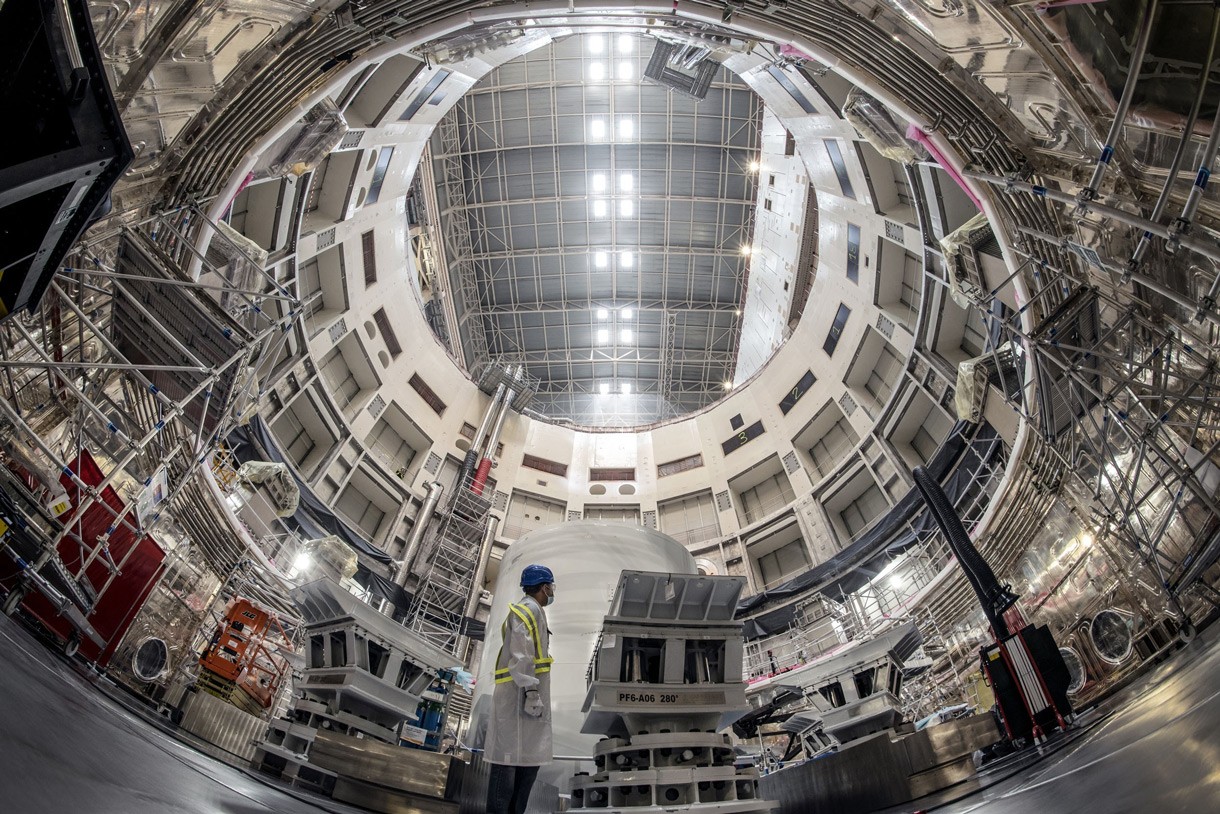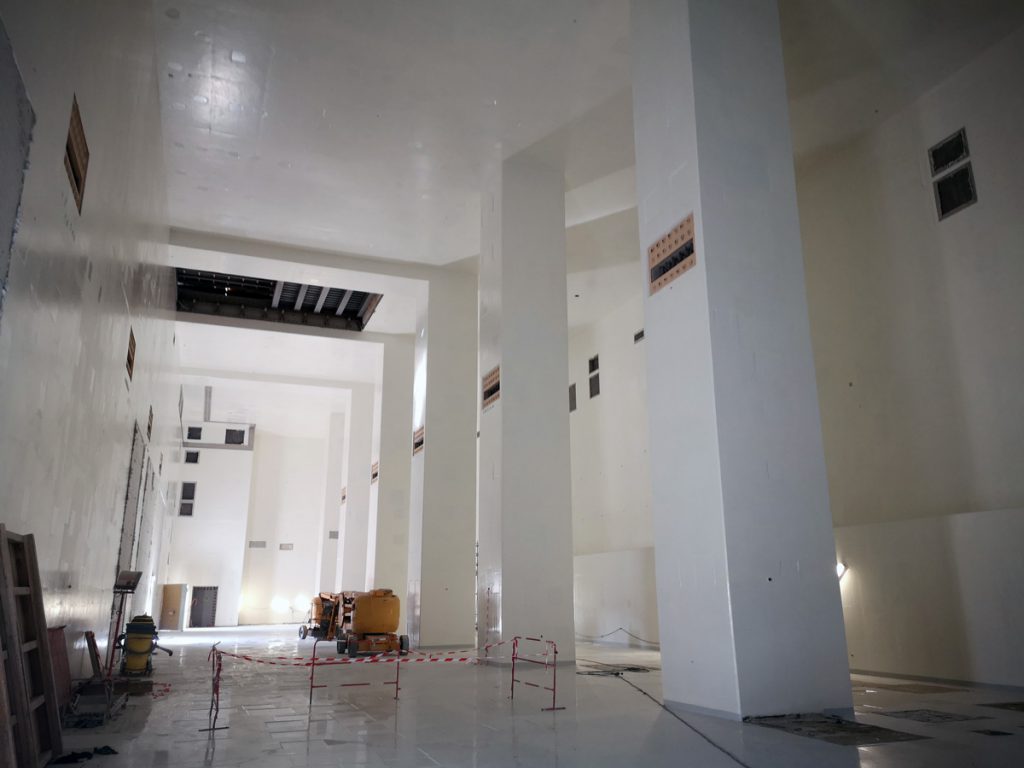Painting works completed in ITER Tokamak building

Inside the painted Tokamak pit, where a technician finishes welding the lower cylinder of the cryostat to the base, Cadarache, France, March 2021 © ITER Organization
In civil engineering, when the final layer of paint is applied it is usually a good sign. It means that the rough and heavy works are over and it is time to apply the finishing touches, almost like “makeup” on the surfaces. The aim is to guarantee, to the degree possible and depending on the area in the building, a smooth, clean, nonflammable, decontaminated, radiation-resistant result. ITER, the international fusion experiment, is no exception to the rule. Even the biggest scientific collaboration needs its dose of pampering to look good. The Tokamak pit in, the main building where the hottest fusion device will be located, has been undergoing a makeover challenge during the last two years. Similarly, the rest of the Tokamak building, which will house equipment.

Teams of specialists have spent time examining the thick, hard walls of this fusion castle to check the porosity of its walls before qualified painters moved in with their brushes for the final strokes. Their mission was to identify any tiny gaps or holes, assess the roughness of the surface, sandblast it carefully and then, scrub it to remove any impurities. As soon as this ‘exfoliation’ process is completed, the silky smooth layers of white paint will cover the walls, almost like icing on a cake, to give a final touch.

The painting works of the Tokamak and Tritium buildings, plus Site Services and Radio Frequency buildings, are mainly carried out through a contract signed between F4E and GDES, for approximately 18 million EUR. On average, 30-40 people are involved, including workers on the ground and technical people following the progress. So far, half of the works have been completed with 65 000 m2 fully painted using 220 000 kg of paint. Rolling out the operation has not been so easy due to the various works performed in the building. Marian Sanchez, F4E Technical Officer, following the contract, praised the adaptability of contractors in performing their tasks. “We faced two contradictory challenges: meeting a tight schedule, which we had to respect, and ensuring a high degree of flexibility, in planning to perform these tasks, because the painters had to be the last ones in the slab. In the end, the good team spirit between F4E, ITER Organization, the Engage consortium, Energhia consortium and GDES helped us deliver on both fronts.” Having completed the painting of the Tokamak building, the crew is now moving to other facilities aiming to complete their work by August 2024.